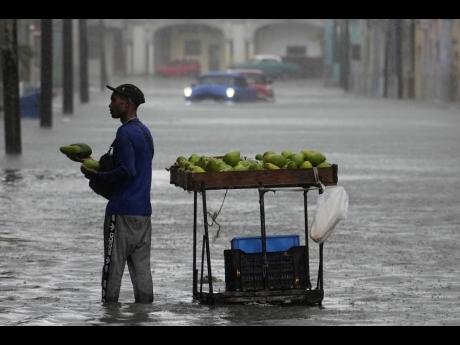Shonel Dwyer | Decoding hurricanes in the Caribbean
Unravelling the 2023 season: A tale of uncertainty and complexity
Looking ahead to the rest of the 2023 Atlantic hurricane season, forecasters have revised their predictions to indicate a more active season than originally expected, even with a strengthening El Niño in play.
The current forecast points to a potential of 21 named storms, with up to 11 of them possibly developing into hurricanes, exceeding the usual yearly averages. Yet, the influence of climate change adds a level of uncertainty to these projections, creating a complex puzzle to unravel.
FAVOURABLE CONDITIONS FOR HURRICANES
1. The warm embrace of the Atlantic is essential to forming hurricanes is the warmth of the Atlantic Ocean. Recent months have witnessed exceptionally high sea surface temperatures (SSTs), breaking records for this time of year. These elevated SSTs, perhaps intensified by climate change, supply the energy necessary for tropical waves to grow into strong hurricanes. These warm waters serve as the starting point for cyclonic activity.
One of the captivating interplays within this narrative is how warm waters of the Atlantic interact with tropical waves coming off the coast of Africa. These waves, with their low-pressure centres, act as dynamic centres of convergence.
Guided by the gentle trade winds, they travel across the tropical Atlantic into the Caribbean, carrying clusters of clouds and showers as they journey across the vast expanse of warm Atlantic Ocean. “These waves, with their own intrinsic rhythm (i.e. they are produced every three to seven days), are important contributors to the Caribbean rainy season,” said Professor Michael Taylor. Warm oceans nurture the evolution of these waves into potential hurricanes, acting as a vital catalyst in the atmospheric processes that might eventually lead to massive convectional developments, such as cyclones/hurricanes.
2. The shear factor. In the context of hurricane development, the role of wind shear becomes a crucial factor. When upper-level winds, like jet streams, and lower-level winds, such as trade winds, align smoothly, it creates conditions favourable for hurricanes to grow. This alignment enables the storm system to organise vertically and strengthen. On the other hand, high wind shear, marked by differing wind directions of upper-level and lower-level winds, exerts a disruptive influence on developing hurricanes. This misalignment can tilt the storm’s structure and hinder its upward growth, limiting its ability to intensify.
El Niño-southern oscillation (ENSO) phases and wind shear
El Niño, characterised by elevated sea surface temperatures in the equatorial Pacific, frequently catalyses an escalation of wind shear over the Atlantic and quiets the Caribbean region. This augmented shear, effectively discourages the progression of hurricanes, impeding the harmonisation/alignment of major storm systems. However, Professor Michael Taylor postulates that this relationship isn’t entirely certain, particularly in light of the languid emergence of the 2023 El Niño. As a result, the customary modulation of wind shear engendered by the climatic oscillation of the El Niño might not necessarily abate the formation and intensification of hurricanes. This uncertainty contributes to the updated prediction of a more active hurricane season.
SAHARAN DUST AND CLOUDY SKIES
Enter the Saharan Air Layer (SAL), a plume of dust from the Sahara Desert that might also influence cloud formation and thunderstorm activity. This dust plume carries significantly less moisture than normal, which can impede convection and the formation of the cloud types necessary for storm development. When a tropical wave encounters the SAL, several interactions take place. The airborne dust mass depletes the moisture from the tropical wave, and inhibits convection (the upward movement of air within the tropical wave), thus creating a more stable atmospheric environment. This stability can hamper the intensification of the tropical wave into a stronger disturbance.
THE UNFOLDING DRAMA
As we progress through the latter part of the 2023 hurricane season (i.e. until November), a myriad of factors keep forecasters and scientists on their toes. The pace of development of El Niño, the intricate interplay with unprecedented warm Atlantic waters, and the disruptive force of the ‘dry’ SAL all combine to create a captivating and unpredictable drama.
As we navigate the tempestuous waters of hurricane predictions, it becomes evident that no single element can fully determine the outcome of the season. With each factor adding its own layer of complexity, the dance of hurricanes in the Caribbean remains an intricate and mesmerizing spectacle that continues to baffle and amaze scientists and observers alike. Let’s also note that while El Niño might be good for tearing apart hurricanes, we may lose convective development altogether and not have enough rainfall.
Shonel Dwyer is senior technology officer at National Commission on Science and Technology (NCST). She is a geologist who has worked as a specialist in natural/water resources management and the local oil and gas sector. Send feedback to columns@gleanerjm.com



